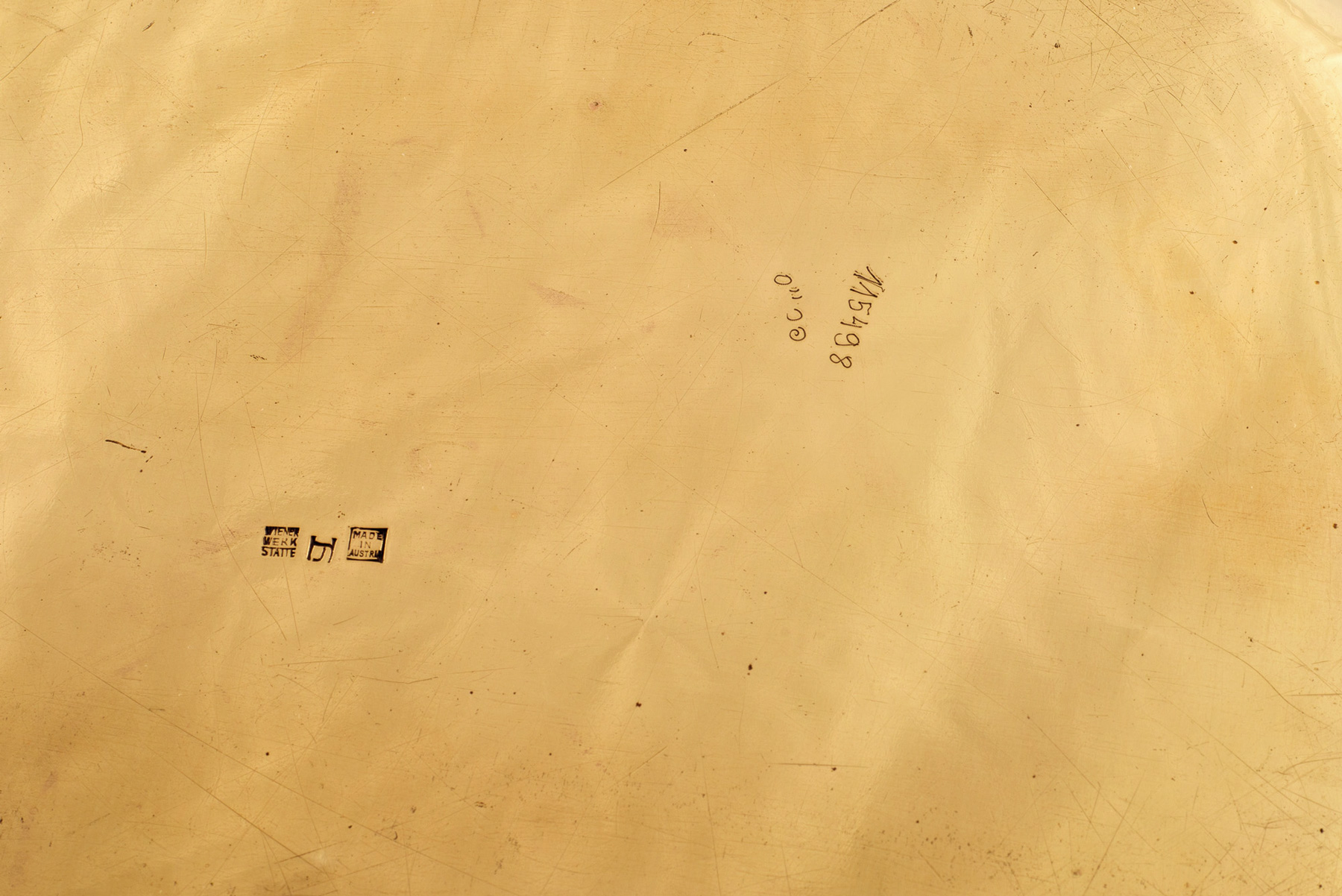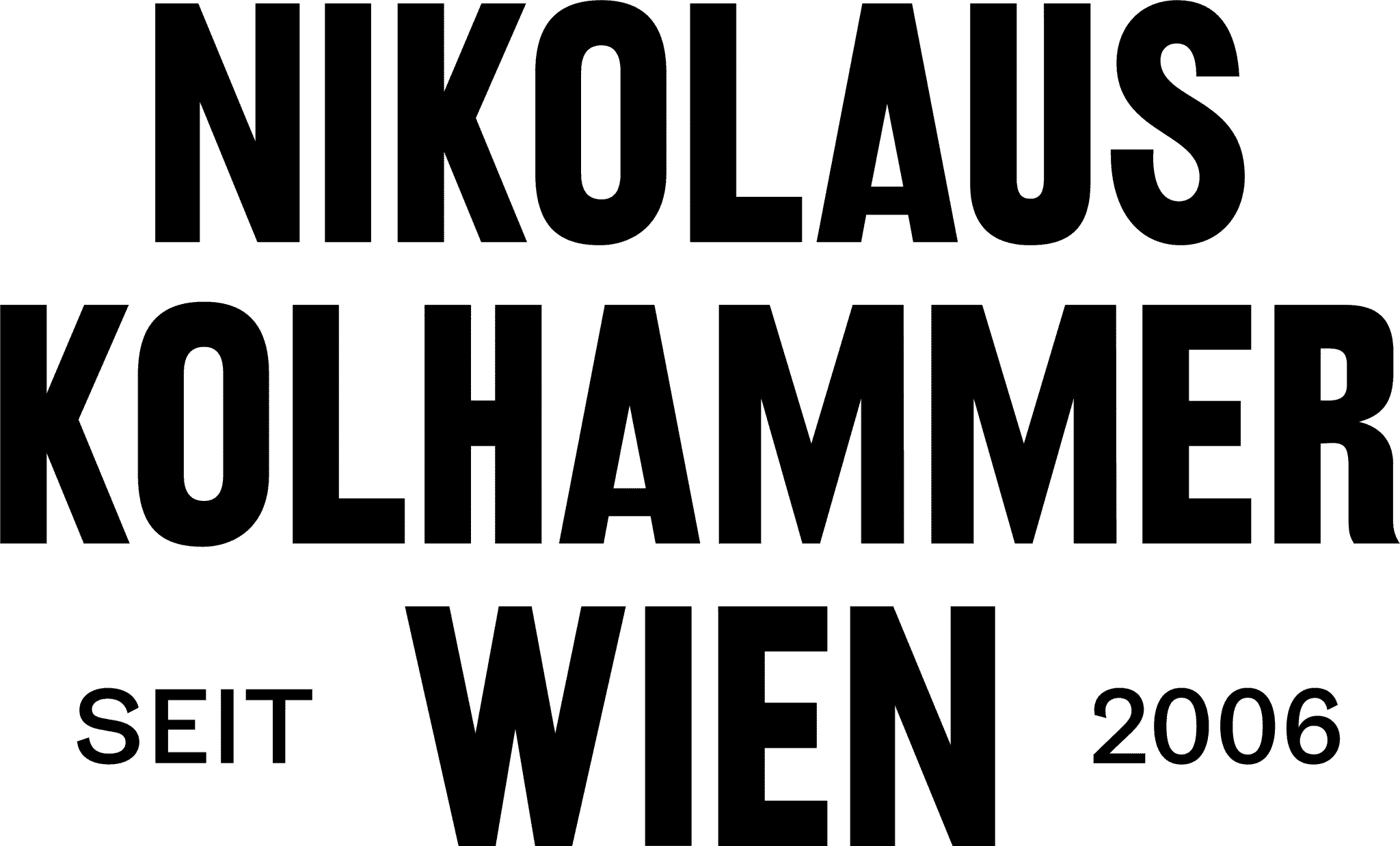Smoker’s set Josef Hoffmann Wiener Werkstatte ca. 1923
Complete smoker’s set, Josef Hoffmann, Wiener Werkstatte, ca. 1923, brass, marked, set consisting of tray, cigar bowl, cigarette bowl, two ashtrays
Measurements: tray diameter 32 cm, cigar bowl h 11,5 x d 11 cm;every single piece marked with the artist’s monogram “JH” and “WIENER/WERK/STÄTTE”Bib.: Archive of the WW in the Museum of Applied Arts Vienna, contemporary photo, inv. no. WWF 114-9-3; sales catalogue Wiener Werkstatte 1926, p. 39
Description
From the founding days of the Wiener Werkstatte, Josef Hoffmann was one of its leading designers. He developed concepts for the architecture of houses as well as interiors, like designs for all the furniture, furnishings, textiles, and tableware in the spirit of the Gesamtkunstwerk.
This complete smoker’s set dates to the early 1920s. It consists of a tray with a cigarette and cigar bowl and two ash trays. The set for an upper-class household was elaborately chased from brass, which is typical for the time around 1920. The craftsmanship is impeccable and catered to the aesthetics of the time. This iconic design by Hoffmann was suitable as an elegant accessory for the smoking room as the representative place of hospitality in an upper-bourgeoisie home. Each individual piece is marked with the designer’s monogram “JH” and the mark “WIENER/WERK/STÄTTE”.
Artist
Execution
Wiener Werkstatte 1903 - 1932 The Wiener Werkstatte was a production community founded on the model of the Arts and Crafts movement, which aimed to provide a platform for artistically designed and high quality crafts. Or, as G. Fahr-Becker puts it "...it was a workshop that gathered many, a work of art as the result of all the arts." Founded in 1903 by Josef Hoffmann, Koloman Moser and industrialist Fritz Waerndorfer, the Wiener Werkstatte (WW) initially produced and distributed only metal objects. The range was subsequently rapidly expanded to include furniture, furnishings, textiles, jewellery, accessories made of ceramics and glass, leather, etc. The wide range of products was sold in the company's own business premises in Vienna and, for a time, also in branches in Zurich and New York. The founding fathers and artistic directors J. Hoffmann and K. Moser originally pursued the ideal of artistic penetration of all areas of life in the sense of the Gesamtkunstwerk (total work of art). This radical aspiration could only be realized in a few projects, which were commissioned primarily by upper-class patrons. Impressive examples of this are the Palais Stoclet in Brussels or the Villa Skywa-Primavesi in Vienna. In its early years, the company was still committed to a strict geometric style, but this functionalism was soon expanded to include more pleasing forms. As a representative of a more decorative line, we should mention Dagobert Peche, who with his playful, imaginative ornamentation contributed designs for all divisions of WW. An important creative contribution, especially in the decorative sections of the WW, was made by the female artists from around 1915. The best known would probably be the ceramic artists Vally Wieselthier and Gudrun Baudisch. The significance of many of these female designers has only been duly appreciated in recent years*. The increasingly difficult economic environment after World War I led to the liquidation of the WW in 1932. Gabriele Fahr-Becker writes: "The financial difficulties which the Wiener Werkstatte had to face during its existence were not primarily the result of economic ignorance, but were based on the fact that the broad public could not be reached as buyers" (G. Fahr-Becker, Wiener Werkstätte, Taschen 1994, p. 12). Beyond the relatively short period of its existence, the Wiener Werkstatte exerted a lasting influence. Arts and crafts as well as applied arts were decisively revalued and a whole generation of architects, artists and designers were influenced by the artistic will of their founding fathers. *Bib.: C. Thun-Hohenstein, A.-K. Rossberg, E. Schmuttermeier (ed.), Die Frauen der Wiener Werkstatte (The Women of the Wiener Werkstatte), exhibition catalog Museum of Applied Arts Vienna, Wien 2020
Inquiry
By submitting the inquiry form, you agree to the use of your data for this inquiry. Privacy Policy


















